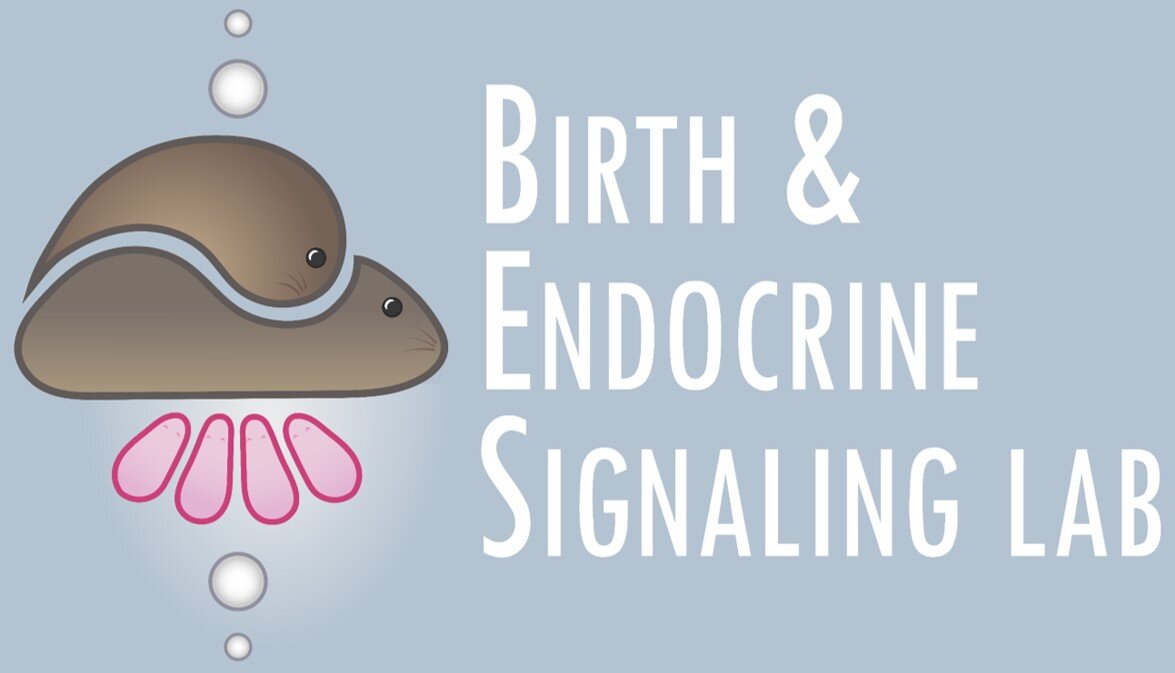Birth
“The emergence of life from the sea to the terrestrial environment that took millions of years during evolution is accomplished within hours through labour and parturition” (Ben-Ari, 2015). The same hormones that help the mother achieve delivery (oxytocin, vasopressin, various glucocorticoids and catecholamines) also prepare the newborn for the tremendous changes that must be accomplished upon entry into the extrauterine world. Researchers have known for some time that these birth signaling hormones also play important roles in switching on maternal behavior in the pregnant female and begin bonding. Thus, both mother and newborn are evolved to be sensitive to the surge of hormones at birth, and to use that surge as a signal for the dramatic changes that must then occur (Kenkel et al., 2014).
While neuroscientists like myself were exploring oxytocin’s role in bonding, the field of obstetrics was exploring oxytocin’s role in facilitating uterine contractions. Oxytocin can be exogenously administered to either begin (induce) or boost (augment) labor contractions, and is usually sold under the trade name Pitocin for such purposes. The rates of oxytocin’s use have been growing over the past several decades. In 1990, 9.5% of all births in the U.S. were induced, while as of 2015 the rate was 23.8% (National Vital Statistics). Survey estimates of labor augmentation place the rate at 40-60% (Listening to Mothers surveys). Finally, approximately one third of births in the U.S. are accomplished via cesarean section, and after such delivery, newborns have lower plasma levels of all of the birth signaling hormones. Thus, most contemporary births are occuring in a hormonal mileau that is different than what the neonatal nervous system evolved to expect.
Different hormonal exposures at birth can have myriad developmental consequences. The early neonatal period is a ‘sensitive period’ in terms of hormone exposures, meaning that these hormones play organizing roles in the developing brain and changes in their signaling are likely to produce long-term consequences (Kenkel et al., 2014). Epidemiologists have associated labor induction / augmentation with increased risk of autism (e.g.Gregory et al., 2009), and cesarean delivery with obesity/diabetes (reviewed in Hyde et al., 2012). But these studies in human populations are purely correlational, and they lack a mechanism at which we could direct interventions. The purpose of my research is to test experimentally how different birth experiences affect the developing nervous system, and whether these changes occur through the birth signaling hormones.
My first study of this sort took the form of testing how oxytocin administered to pregnant females on the expected day of delivery (analogous to labor induction) affected the development of their offspring. In this study (Kenkel et al., 2019), we injected pregnant female prairie vols with either oxytocin or saline vehicle and then cross-fostered their offspring so as to control for any effects the oxytocin may have had on maternal behavior. What we found was that fetal physiology seems sensitive to maternal oxytocin administration. This challenges the previous dogma in the field which held that oxytocin given to pregnant mothers wouldn’t reach nor affect the offspring.
Furthermore, maternal oxytocin administratioon produced long-term changes in offspring behavior and brain development. We observed epigenetic changes to the oxytocin receptors in the brains of pups following oxytocin administration that could explain some of these long-lasting effects. Voles born to oxytocin-treated mothers were broadly more gregarious across several measures of social behavior in later life. These oxytocin-exposed voles were more alloparental towards pups, and huddled more with other adults, while retaining their monogamous pair-bonding behavior. At least in male offspring, oxytocin exposure at birth produced changes in the expression of oxytocin and vasopressin receptors in the brain that persisted into adulthood.
This is a good point to bring up an important caveat to all this: we know very little about the long-term consequences of these birth interventions. Further, these interventions are being carried out so frequently because they improve the health outcomes that obstetricians value, things like improving maternal and neonatal survival. If practices like labor induction or cesarean delivery do indeed have long-term consequences for the offspring, those consequences are likely to be a mixture of things we consider both positive and negative. The purpose of my research is not to be prescriptive over how one should give birth, but to provide a more complete context from within which to make that decision.

